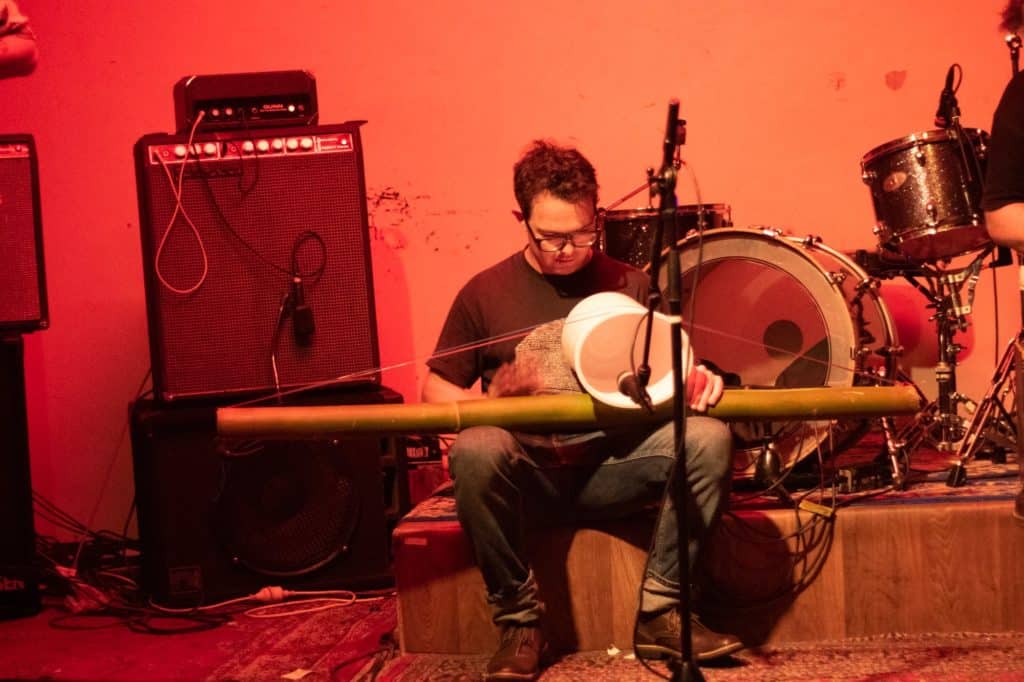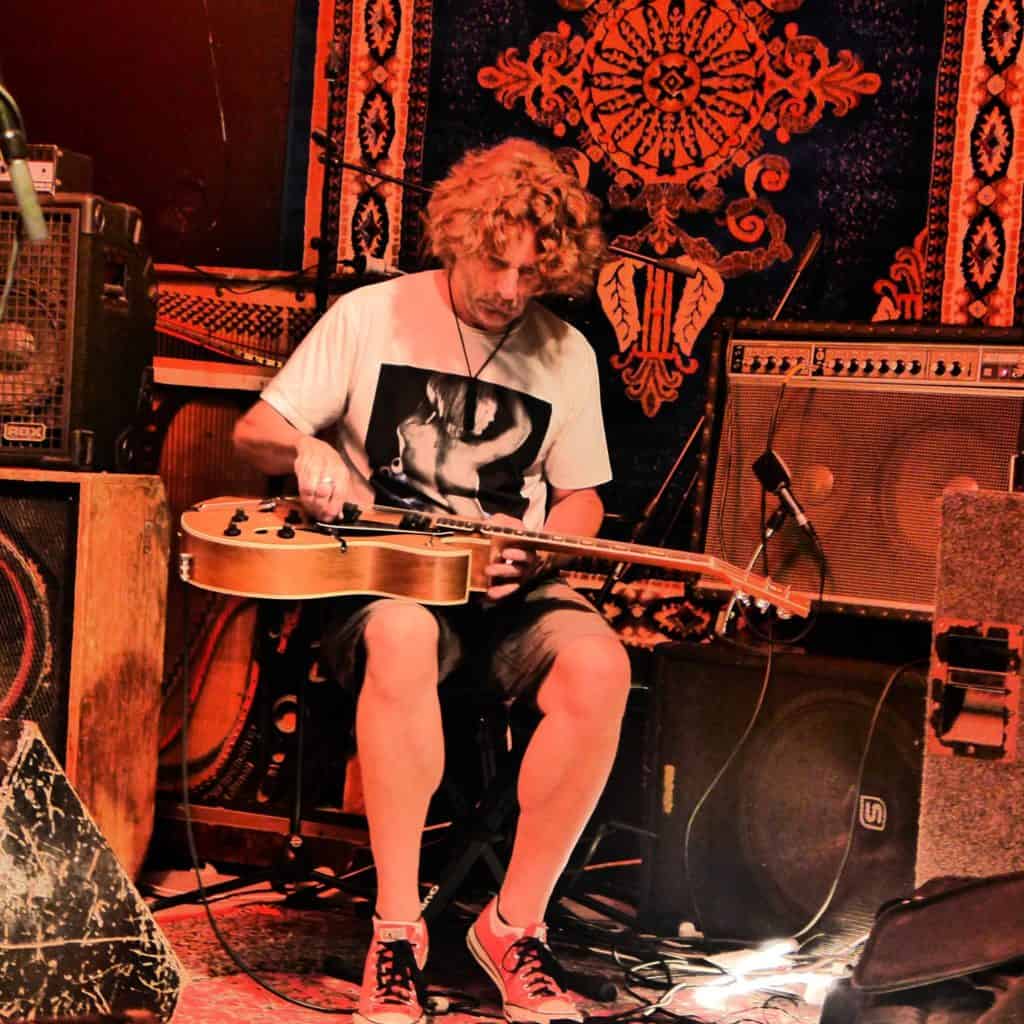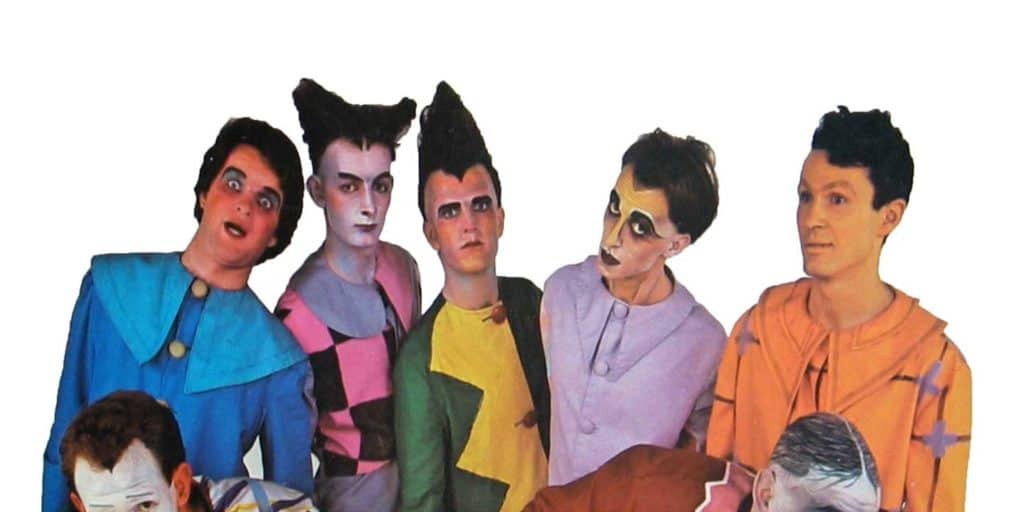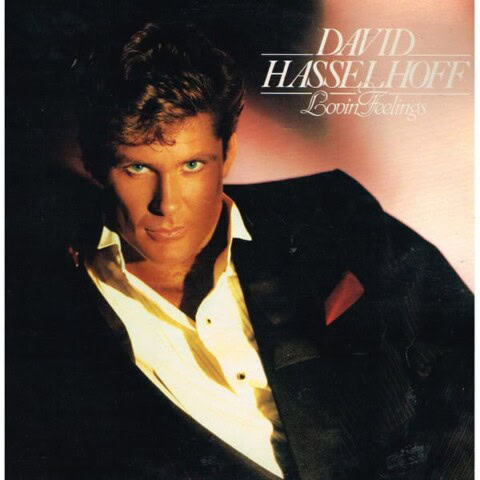Just what is music anyway, and what is it for? GARY STEEL certainly has an opinon or two about these cosmic vibrations that decorate our lives.

For many years there was an annual Australian festival called What Is Music? Its performers set about answering that question in their own eccentric ways, mostly by stretching the average listener’s perception of what they were willing to think of as music. In New Zealand, that festival’s spin-off, the Alt-Music Festival, asked the same question, as does the Auckland-based improvising music collective, Vitamin S.
Vitamin S holds a weekly get-together in a run-down bar in Karangahape Rd, where musicians are welcome to just turn up with their instrument, and improvise with whomever else turns up that week. The only rule is that no pre-ordained songs are performed.

When virtuoso guitarist Nigel Gavin played at Vitamin S, he was flung right out of his comfort zone. “I did one night performing with a guy who was playing four digital alarm clocks – that was his instrument,” he told me. “And another time, a guy was playing an old-fashioned typewriter. The first time I played there, a guy was playing percussion with a weed eater and saws, and another guy was miking up spinning musical tops. I was staring at the guitar feeling way overdressed! But you need to step out of your comfort zone to play something new… pure spontaneity!”
So-called experimental musicians are constantly tearing away at the boundaries, testing our perceptions, and just as well: were it not for thinking outside the square, even the history of pop, rock, hip-hop and heavy metal may have stalled back in the dark ages. Imagine if The Beatles had never evolved from safe, naïve boy-band tunes like ‘I Want To Hold Your Hand’? If Paul McCartney hadn’t been turned onto experimental electronic music, and John Lennon hadn’t discovered a world of avant-garde art, then the world may never have been blessed with a record that often wins Best Record Ever Made awards, Sergeant Pepper’s Lonely Hearts Club Band.
Behind many of the greatest pop and rock moments is an avant-garde idea: think of Brian Eno and Robert Fripp’s amazing audio canvasses on David Bowie’s ‘Berlin trilogy’ of Low, Heroes and Lodger, or the way that Radiohead cleverly reduced their stadium-sized rock to a clicking micro-universe on the intensely intimate Kid A. Or Hank Shocklee’s radical sound design for hip-hop group Public Enemy’s It Takes A Nation Of Millions To Hold Us Back, where the sound was as provocative as the politically motivated lyrics, but in a way that recalled the sampling strategies of the 1950s experimental technique known as musique concrete, thereby avoiding anything resembling the usual rap clichés.
But what is music, really? We grow up taking it for granted, and it’s so fully integrated into our life and experiences that we seldom think about it. Many would say that music is all about melody, while some would say harmony, or rhythm. A music expert might talk about timbre (the quality of a tone), or texture in a composition. Speaking of which, a classical music fan might say that music is a composition defined by notation, that method of writing and reading music we shall call ‘dots on paper’. People of a more experimental nature might go so far as to claim that music is organised sound: that it doesn’t need to have any of the attributes listed above to make it music.
Then again, when we walk under the canopy of a moist New Zealand forest, what are we hearing when a Tui peals out a series of extraordinary sounds? Is that music? They call it bird song, but does the fact that it’s not touched by human hand disqualify it from our consideration? It’s certainly gorgeous, and haunting, and can be an emotional experience, especially when it rings around the bush in spectacular surround sound! And what about the calming impact of cricket song on a summer evening? Is that music?
There is a theory that the origin of music resides in human speech: that all music is in effect a gigantic elaboration of the tonal colour, expressive range and complex rhythms of language. That theory holds water, and it tends to back up the idea that music is the only international language, except that music isn’t really about anything, it just transmits a complex code of emotions through vibrations in the air.
Around the turn of the century, I was running an esoteric record store, and one of the most intriguing albums I stocked was a five-CD set, The Conet Project: Recordings Of Shortwave Numbers Stations. There’s no easy way to explain what this is, or the impact of the ‘music’, if indeed it is music. The Conet Project consists of scratchy, muffled recordings of coded shortwave radio broadcasts used by spies in wartime, so they’re typically disembodied, ghostly voices reading odd sequences of numbers and words, with strange and sometimes cheerful sounding musical insignia breaking up the speech. I went through a phase where I wanted to listen to nothing but The Conet Project, and it lasted for weeks on end. And it seemed to morph with whatever mood I was in at the time: sometimes it would sound sinister, while other times it would sound mysterious, or conversational. Is The Conet Project music? I will probably never know for sure, but I like it!
And maybe that’s the thing. Maybe music is what you want it to be. To Britney Spears fans, music is a three-minute power ballad that comes with a shot of dance music adrenalin and a sing-a-long melody about some relationship indiscretion. It’s a limited perspective on music, but what the hell?
To me, music is a chance to explore the sonic universe, and my enjoyment of it has little to do with perky beats or choruses that stick in my mind like used chewing gum, and it’s definitely not about some guy with an acoustic guitar telling me how his woman wronged him and how sensitive he is to the vagaries of life. (But if you like that kind of thing, go for it!) Nah, I like the sound of music (no, not the Julie Andrews version).
And you know what? I think there are plenty of others just like me, despite what the media pundits would have us believe. Today’s audiences have grown up with computer games, game consoles, and the ubiquitous sound of the Foley (sound effects) experts unleashing all manner of audio thrills to cinema audiences. Electronic sounds are buzzing around us all day through the apps we download to the ‘alerts’ on our cellphones. I don’t think that people have the same limitations on the word ‘music’ that previous generations have lived with.
Back in the 1920s, when Leo Theremin introduced his revolutionary electronic instrument (the Theremin) to polite society, it was seen as an abomination, and it took 30 years for the extraordinary invention to get its just desserts, when it was used as a spooky sound in countless horror movies, and later, on The Beach Boys’ classic ‘Good Vibrations’.
When the architects of musique concrete recorded the sound of trains, and presented sound collages of these documentary recordings as music compositions, polite society’s verdict was that this just wasn’t music. When a very tame, portly fellow called Bill Haley released ‘Rock Around The Clock’ in the ‘50s, the arbiters of society said: This just isn’t music. And when my parents heard me blasting out Led Zeppelin from my brother’s 2-watt record player in 1970, their verdict: “That’s just not music!”
Some knowledgeable individuals reckon we’ve reached end-times, and that now we’ve got a recorded music history stretching back over more than 100 years, we’re inevitably going to start repeating ourselves. That may be a legitimate concern, in a world where just about any fabulous ‘new idea’ can be Googled, and found to have been taken already.
Well, that’s the glass-half-empty version, anyway. The version I like is that modern technology has given us the amazing opportunity to widen our horizons. We don’t have to think in terms of just one style of music belonging to one particular subculture anymore. We can mix and match and make anew, just like we might do with Op Shop clothes. And pre-internet, we had our blinkers on about just what had happened in that last 100 years. Now, there’s a vast (mostly free) archive of ancient recordings from different cultures around the world telling many different stories, and imbuing on anyone that absorbs it a different spin on music, and how it relates to culture, and history.
I’m all for the cup half full version, or preferably, the one where the cup froths over.
Notes:
The Conet Project has been made available free to download here:
Vitamin S website:
New Zealand native bird song:
http://www.doc.govt.nz/conservation/native-animals/birds/new-zealand-bird-songs-and-calls/
The Theremin:
http://www.youtube.com/watch?v=w5qf9O6c20o
* This piece was originally published in Rip It Up (RIP) in 2014.















